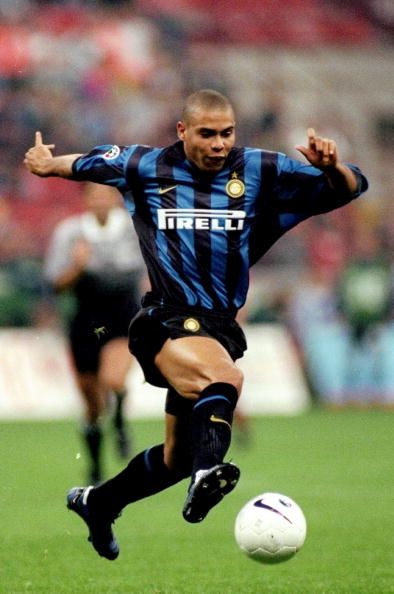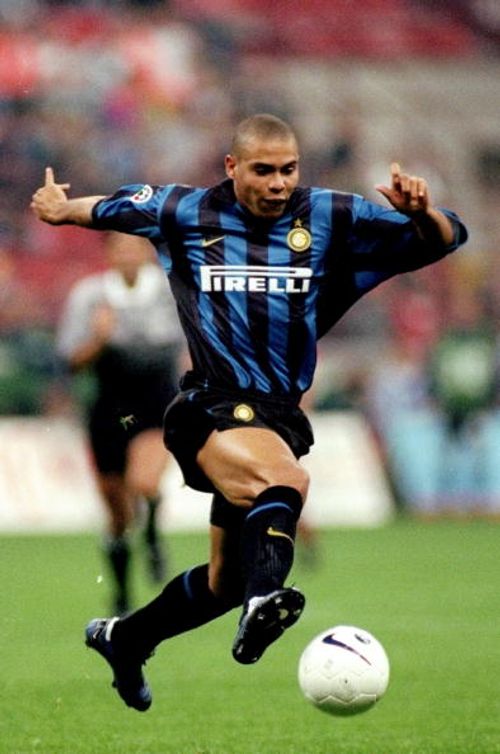
How Ronaldo changed the Number 9 position at Inter

Ronaldo Luiz Nazario da Lima was, and as matter fact still is, my favorite player. I was about 5 years old when I saw him play for the first time with Inter Milan and to be honest, I fell in love with his game at first sight. Maybe it was his speed… maybe it was his power or was it his wonderful technique that allowed him to completely eliminate defenders?
Actually, thinking about it now, one aspect of his game stood out from all of his qualities in my 5-year-old-brain: his ability to score goals. At the end the game of Football is about scoring goals and boy did R9 score goals.
However growing up, the Seri A had plenty of prolific strikers, pure goal scorers! Oliver Bierrof and Pipo Izhagui are two big names that come to my mind. Del Piero, Totti and Baggio were also wonderful players in that period. But none of them brought the magic thatI saw when I watched Inter Milan games. What was the X factor?
A bit of football history now…
Before Ronaldo, the “striker” position was fairly typical. A lone-target-man was placed up front and he was responsible of scoring. That lone man didn’t have to be very skilled neither did he have to be particularly quick. He just had to put the ball inside the net. The perfect example of such player would be the 1982 World Cup Italian hero Paulo Rossi. Not particularly gifted with the ball, not a dribbler, but certainly a terrific goal scorer that had a wonderful sense of positioning. Another extreme example would be the French 1998 starting striker Stephan Guivarch (if you remember who that was).
Not all ”ante-R9? number 9s were like Paulo Rossi or Serginho! Jarzinho and Pele were both outstanding in that role in the 1970 WC. K. Keegan and Guerd Muller were also extremely talented strikers in the seventies. I am certain that they had the pace to adapt to post-modern football. Careca, Hugo Sanchez and Karl-Heinz Rummenigge dominated the eighties. Finally Romario and Marco Van Basten sort of redefined the role of the striker in the early nineties.
However, tactically, they all had the same characteristics. Also, they had the same objective: score goals without (necessarily) participating in the other aspects of the game.
When R9 started his career with Cruzero back in 1993, nobody quite understood what he really was. He was so much more explosive than the likes of Romario, Van Basten and Jean Pierre Papin, yet he was able to put up (even) more impressive numbers. Was he a goal poacher or a future trequartista? Players with that explosiveness were usually fielded as trequartistas in the 90s but his goal scoring ability meant that he’d be a striker… a new type of number 9 -that could do much more than just score goals- the typical modern football number 9.
Would he be able to do the same in Europe? His impressive record (55 goals in 57 games) with PSV answered that question. Brilliant seasons with both Barcelona and Inter confirmed his legend-status in the game.
It was at Inter that he truly developed into a phenomenon. The Italian Seri A was in the late 90s the most difficult league for offensive players mainly because defenders were tougher and there was less space for them to play their games. This reality still holds nowadays and it explains why many talented strikers and attacking midfielders have not been able to succeed in the Seri A (Diego from Juventus a couple of years ago is an example).
But Ronaldo didn’t care who was playing against him. Whether it was Nesta, Maldini or Canavaro, he delivered!
On the pitch Ronaldo was often fielded as a “segunda-punta,”a second striker who roams around a more traditional/conventional central striker. Inter usually played either a classic 4-4-2 or4-4-2 diamond. Thus Ronaldo always played along side another striker: Zamorano then Vieri with Inter with a trequartista playing behind them (Youri Djorkaeff, Seedorf or Alavaro Recoba).
When he played that role (segunda punta), Ronaldo revolutionized the position. Not only was he able to score; he was also capable of creating goals for his team mates, running on the wings, drawing fouls in dangerous areas, provoke penalty kicks and terrify any defense he played against. He was a player capable of doing everything that was necessary to win a game. A player who was able to cut from the wings to a central position. A precursor of todays false 9s and multifunctional attacking players: Lionel Messi, Cristiano Ronaldo, Robin Van Persie and even Neymar.